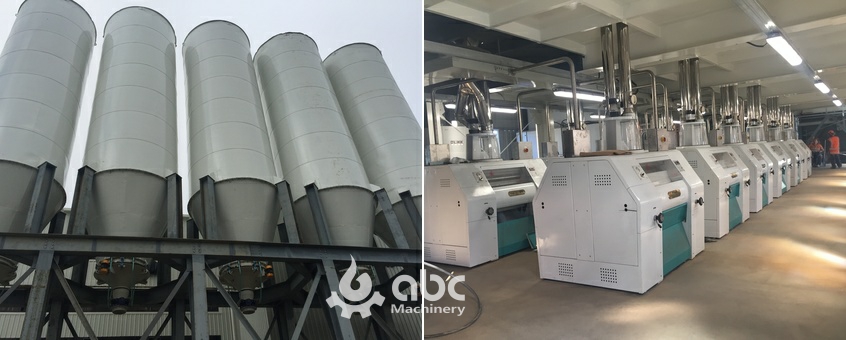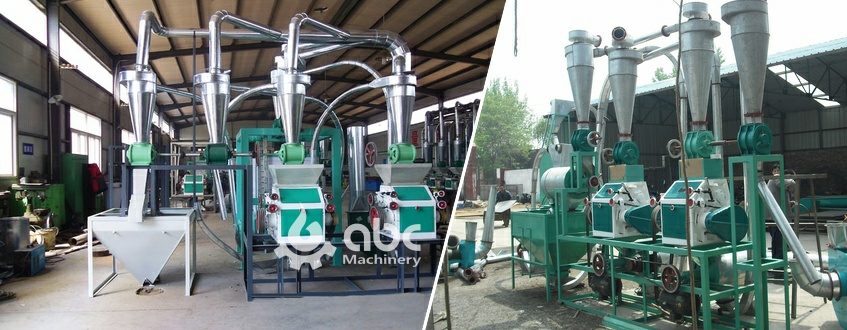Ethiopia’s wheat flour milling industry is at a turning point, fueled by surging urban demand, steady population growth, and government-backed incentives for food processing. With domestic production unable to fully meet consumption needs, the market relies on millions of tons of wheat imports each year — a gap that opens the door for new investment in modern wheat flour milling facilities.

Starting Wheat Flour Millling Business is Feasible
This article explores the latest wheat milling market trends, demand outlook, and investment opportunities in Ethiopia’s flour sector, offering practical guidance on flour mill plant design, equipment selection, and business models. Whether you are considering a home flour mill machine operation or a large commercial plant, we are able to provide you with favourable quotes and complete service.
Wheat is the second-most consumed cereal after maize in Ethiopia, accounting for around 17–20% of total grain intake. Urbanization, which is growing at over 4% annually, is increasing demand for processed flour products such as bread, pasta, and biscuits.
Domestic wheat production covers approximately 65–70% of national demand, leaving a 30–35% gap filled through imports. According to recent Ethiopia wheat consumption trends, per capita wheat consumption has climbed from 50 kg/year in 2015 to nearly 70 kg/year in 2024, reflecting changing consumer preferences.
Table: Ethiopia’s Wheat Balance (2023)
| Category | Volume (Metric Tons) | Share (%) |
|---|---|---|
| Domestic Wheat | 4.5 million | 68 |
| Imports | 2.1 million | 32 |
| Total Demand | 6.6 million | 100 |
These figures suggest a consistent supply-demand gap that creates space for local wheat flour milling investment.
Investors entering wheat milling industry now can capture market share while benefiting from Ethiopia's government incentives for food processing industries (including tax holidays and import duty exemptions for flour milling machines).
Tap into Ethiopia’s growing wheat flour milling market – Contact us to starting your profitable milling venture today!

Fully Automatic Wheat Flour Mill Plant Project
Choosing the right location for a flour mill in Ethiopia is critical to ensuring smooth operations and cost efficiency. Proximity to major wheat-producing regions such as Oromia and Amhara helps reduce raw material transportation costs and secures a steady supply of wheat throughout the year. Additionally, convenient access to major transport routes facilitates timely delivery of finished flour products to key urban centers like Addis Ababa, Dire Dawa, and Mekelle, where demand is highest.
Inside the plant, an efficient layout separates key operational zones — cleaning, milling, sifting, blending, packaging, and storage — to streamline production flow and minimize material handling. Employing a vertical design approach can save valuable floor space, especially in areas where land costs are high, while improving gravity-assisted grain movement and reducing labor needs.
Properly designed storage facilities are also vital to maintain product quality. Climate-controlled warehouses with good ventilation protect raw wheat and finished flour from moisture, pests, and contamination, helping preserve freshness and extend shelf life.
High-Performance Wheat Milling Machines For Sale
Learning about Wheat Flour Mill Process Steps Explained>>
Integrating automated flour milling systems can cut labor requirements by up to 35% while improving output consistency.
Equipment suppliers with local service networks in Ethiopia can reduce downtime by 20–25%, ensuring steady production schedules.

Commercial Small Wheat Flour Mill Machines at Factory Price
ABC Machinery offers a comprehensive range of energy-efficient flour milling equipment backed by a dedicated local service network in Ethiopia. We sincerely invite agricultural equipment suppliers with advanced technology and rich experience to join our local sale network.
Our team ensures seamless installation, commissioning, and after-sales support, minimizing downtime and maximizing productivity. Reach out to us to explore wheat milling solutions tailored to your production needs.
The wheat flour processing sector in Ethiopia presents profitable options for both small-scale and large-scale investors. A micro mill with 20–30 tons/day capacity can generate ROI within 3–4 years, while a commercial facility processing 150–200 tons/day can achieve break-even in under 3 years due to economies of scale. (Related Blog: Making A Wheat Flour Mill Business Plan in Ethiopia>>)
Small-Scale / Community Flour Mills (20–30 t/day)
These plants thrive on proximity to customers, fresh supply, and reduced transport costs, making them ideal for investors looking for quick market entry.
Medium-Scale / Town Flour Mills (50–150 t/day)
They balance volume and flexibility, allowing for product diversification and stronger brand presence.
Large-Scale Industrial Flour Mills (150–500+ t/day)
These operations achieve economies of scale but require robust supply chain management and significant working capital.
Integrated and Contract Milling Models
Some investors choose an integrated model—combining milling with wheat procurement and storage—to secure raw material supply and stabilize margins. Others opt for contract milling or co-packing, producing flour for third parties to maximize capacity utilization and reduce market risk.
In all cases, success depends on three pillars:
With Ethiopia’s growing population, urbanization, and evolving dietary habits, investors who match the right plant scale with the right distribution strategy can secure long-term profitability in this expanding market.